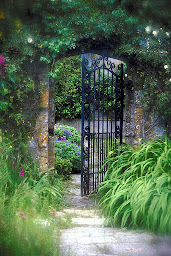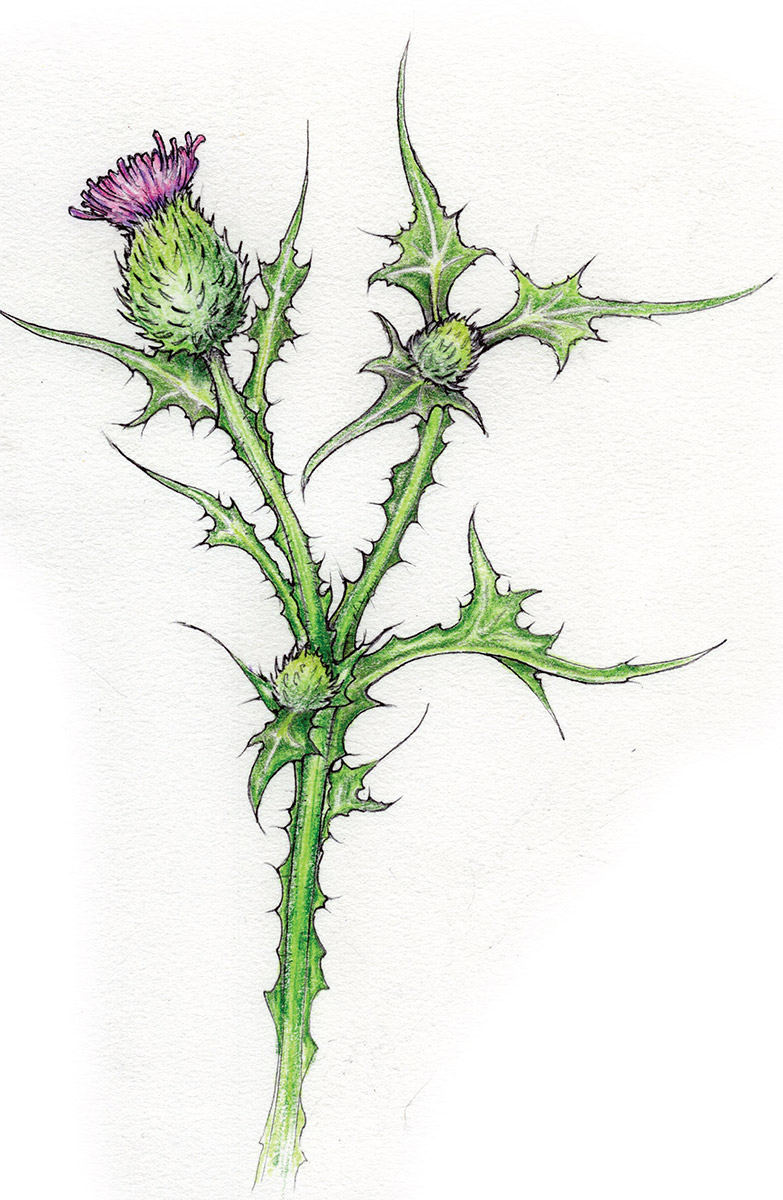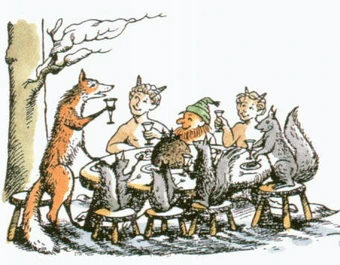Grief agenda, noun:
The inevitable, seemingly
relentless course of thought, action, behavior that follows deep loss.
In a profound way for me and my siblings, the world ended
for us on March 24th, 2020. I was meeting with students by Zoom,
holding virtual office hours discussing a nursing students’ math requirement
for pharmacology, and I received a text, and then a phone call. First my sister
texting: can you take a call? Second, my mother’s caregiver phoning with
attending paramedics. My magnificent mom: singer, speaker, pianist, poet,
international humanitarian agency director (Ukrainian Children’s Christian
Fund) and girl-who-skipped-grade-four, was found unresponsive. Olga OliviaBalabanov Lapka had quietly slipped into eternity just at the beginning of the
Covid pandemic lockdown, therefore foiling any attempts we could make to have a
public Celebration of Life. It was perfectly done—as my mom would have
graciously accepted the gathering of friends from across five or more nations,
but, deep introvert that she was and hid so well, I think she probably
preferred the simple family and close friends send-off we had, rich in prayers
and steeped in love, in the spring sunlight, braced by a brisk breeze, gathered
where her body would rest beside my dad’s.
 We are still reeling, as you can imagine. Although she was 93 years old and beginning to take more frequent cat naps throughout the day, our mom was still
busy in her large home office on her computer, writing receipts for charitable
donations to the mission she and my dad had founded, jotting down thoughts for
bulletin items, and emailing UCCF workers in the Ukraine and Germany. In her
off time, Mom avidly read, wrote notes, kept up on news (TV and her daily
Vancouver Sun paper), cared for her two cats, Pepsi and Honey, and brought us
kids all up to speed on both current events and the antics of the racoon family
that routinely invaded her back yard. She had, only a very few months earlier,
stopped independently driving to attend Sunday morning services at her beloved
Gospel Hall in Richmond.
We are still reeling, as you can imagine. Although she was 93 years old and beginning to take more frequent cat naps throughout the day, our mom was still
busy in her large home office on her computer, writing receipts for charitable
donations to the mission she and my dad had founded, jotting down thoughts for
bulletin items, and emailing UCCF workers in the Ukraine and Germany. In her
off time, Mom avidly read, wrote notes, kept up on news (TV and her daily
Vancouver Sun paper), cared for her two cats, Pepsi and Honey, and brought us
kids all up to speed on both current events and the antics of the racoon family
that routinely invaded her back yard. She had, only a very few months earlier,
stopped independently driving to attend Sunday morning services at her beloved
Gospel Hall in Richmond.
 We humans were not the only ones whose lives were instantly altered. Mom's cats were heart broken. Mom had raised these two from tiny
kittens, adopted them where they had been destined to live out notoriously
short lives as near-feral barn cats.
Honey and Pepsi were brother and sister, both tabbies, but Honey was
orange tabby and Pepsi was a dark grey tabby. They had both grown into stately,
beautiful companions with a streak of mischievous fun. Both cats were highly
bonded to my mom, but Honey in particular never left her side in the few months
leading up to my mom’s passing. So much so, that my sister, another ‘cat lady,’
had a thought cross her mind that Honey might be signaling something that she
did not want to acknowledge—that Mom was getting ready to leave this earth.
Notoriously shy and disappearing when someone new entered the house, Honey
remained firmly seated beside Mom while the paramedics worked on her and stayed
beside her until the funeral home attendants carried her body away. Pepsi
wailed the entire night we were there, in what can only be described as a deep
grieving dirge.
We humans were not the only ones whose lives were instantly altered. Mom's cats were heart broken. Mom had raised these two from tiny
kittens, adopted them where they had been destined to live out notoriously
short lives as near-feral barn cats.
Honey and Pepsi were brother and sister, both tabbies, but Honey was
orange tabby and Pepsi was a dark grey tabby. They had both grown into stately,
beautiful companions with a streak of mischievous fun. Both cats were highly
bonded to my mom, but Honey in particular never left her side in the few months
leading up to my mom’s passing. So much so, that my sister, another ‘cat lady,’
had a thought cross her mind that Honey might be signaling something that she
did not want to acknowledge—that Mom was getting ready to leave this earth.
Notoriously shy and disappearing when someone new entered the house, Honey
remained firmly seated beside Mom while the paramedics worked on her and stayed
beside her until the funeral home attendants carried her body away. Pepsi
wailed the entire night we were there, in what can only be described as a deep
grieving dirge.
Mom had asked me to be the cat’s ‘god mother,’ so, after our
small service, Honey and Pepsi were loaded into their traveling crates and made
the journey to Vancouver Island to our small farm in the Alberni Valley. We
tucked them into our guest room turned cat room, filling it with their own
familiar beds, dishes, toys, litter trays and even hung my mom’s wall clock
with the bird song on the hour on the wall and placed a couple of pairs of my
mom’s personal items in the room. Our own king-of-the-mountain Siamese cat,
Gabe, peeked in with interest as we prepared the room for our two newcomers. We
always described Gabe as a lover not a fighter as he always kept to himself and
out of any neighborhood cat drama. He also, at an early age, made friends with
a young street rat that he tried to convince us to allow in our home. We never
saw him with any ‘trophies’ thereafter; indeed, we had never known Gabe to lift
his paw to anything but friendly fun. I had high hopes that the cat ‘cousins’
would integrate peaceably.

I did not count on the scope of Honey and Pepsi’s grief, nor
on the depth of Gabe’s cherished identity as ‘only cat.’ Gabe had grown up in a
household of pairs: two of us and two Dalmatian dog-sisters. The horses, goats,
and chickens were family groups too, but Gabe stood alone. And he liked it that
way.
After 10 days in isolation from the rest of the animals, we
began to leave the guestroom door ajar in the evening to allow the cats an
opportunity to explore the rest of the house while the other animals were
confined to another part of the house. After a couple of weeks of this, we
began allowing an opportunity for paths to cross in the evening when we were in
the house. It didn’t go well. Maggie, our Dalmatian was fine—she had a vague
interest in the new smells but was politely uninterested otherwise. Gabe and
Pepsi did a weird air-boxing routine that ended up with Pepsi running up the
living room drapes to perch on the curtain rod as if it were the crow’s nest of
a pirate ship. And down he would not come, even after Gabe was hustled off to
the other part of the house. After nearly three days, he was persuaded to come
down, spitting and kicking, and he rushed to the guestroom to fill up on food
and water and ‘unload’ as it were. Soon, we saw him sleeping on our bed and
seemingly unconcerned, purring a greeting to me. The crow’s nest episode was a
turning point for him. Pepsi, newly christened Parry from his habit of
answering everything by parrying back a cat remark, was suddenly becoming one
of the family.
Honey remained oblivious to everything and seemed only
concerned with either hiding under the bed or seeking a way out of the house. Honey
had never made any attempt to connect with us during those 10 days enclosed in
the guestroom or the weeks of evenings in the house while we quietly sat by or
slept in our bed, door open. She never looked at us even while eating her
meals. She refused to join in and play or explore with a cat’s curiosity this
new house with strange farm smells and clucking crowing chickens just outside
the window. She never ran from Gabe nor
approached him. She simply avoided any contact. We would only see her in a
relentless, silent search for an open door or window. Eventually, she would
find one.

Grief agendas are powerful forces. I’ve watched as my
brother has become more connected to family, my older sister returning to
essentials, sharing grace and gratitude, and my younger sister again embrace
composing, singing and recording of music, so much a part of mom’s life. For
myself, writing has demanded I give it more time; words and other worlds are another
legacy-remembrance of my mom who encouraged and edited all my fiction from book
one and before.
When we lose someone beloved, the indelible mark we feel is
life-altering. Grief agendas are written from a place within us that is not
necessarily connected to our pre-frontal cortex and executive function. Grief
agendas do not seem to be a choice and have more in common with a drive or
reaction, in that we find ourselves in a different place than we were before
the split second of grief impacted us. Grief agendas are not decisions made to
improve our lives to honor the passing of someone admired, rather they are the
aftermath of lightning bolt-grief that has seemingly burned us to the
ground-soul of who we were. What we are left with is the cobbling together of
meaning and memory on the art board of this raw, razed self.
In a way, a grief agenda is the final, terrible gift given
to us upon the departure of our loved one. Perhaps that is why we want to hold
onto grief so desperately. It is the last connection that has been physically
drawn on the cognitive heart of our person. To lose grief is to lose that
immediate last connection. We fear the loss of the loss, because we fear a
void.
 If we consciously allow ourselves to be carried by our grief agenda, we learn that we are not left with nothingness. Indeed, we are left
with the germinating seeds of what will grow after our catastrophic loss. Like the
green after a brush fire, saplings emerge. Painfully, perhaps; unplanned, certainly.
And here is where, I think, our choice returns to us. Which saplings will we
prune, bolster, nurture? I find, that as I write and speak, I am a bit braver,
a bit clearer, and a whole lot more heart- and head-strong about what I will
write about. I am also more ruthless about the time I have to accomplish what I
must. Legacy work has become essential work.
If we consciously allow ourselves to be carried by our grief agenda, we learn that we are not left with nothingness. Indeed, we are left
with the germinating seeds of what will grow after our catastrophic loss. Like the
green after a brush fire, saplings emerge. Painfully, perhaps; unplanned, certainly.
And here is where, I think, our choice returns to us. Which saplings will we
prune, bolster, nurture? I find, that as I write and speak, I am a bit braver,
a bit clearer, and a whole lot more heart- and head-strong about what I will
write about. I am also more ruthless about the time I have to accomplish what I
must. Legacy work has become essential work.
Grief agendas ruthlessly pare out the nonessential. In grief
lies the gift of clarity, of what is meaningful, what stands the test of time,
is purpose-filled, core-honest, but not self-gratuitous.
 I suppose, in writing the eulogy of others we learn to listen
for the ring of truth, to recognize her, the core-gift of the person we
loved. We need to uncover the nugget, reach the diamond depth of understanding her
astonishing uniqueness. We are distressed when we hear a tribute that feels
false, that piles platitudes like straw that obscures rather than clarifies this
person-gift to us. Truth, like Charn’s time-waking end-of-days bell in the
Narnian chronicles, really does bring to finality our loss, but in doing so,
truth set us free to resonate with others and appreciate the bitter-sweet
present moment where time flowed into eternity. In writing, and listening to
our beloved’s life story, we learn what stands the test of time; purpose lived
that may have appeared mundane but was foundational gold. We are given the
choice to groom, bend, prune the saplings freshly rooted in our own lives.
I suppose, in writing the eulogy of others we learn to listen
for the ring of truth, to recognize her, the core-gift of the person we
loved. We need to uncover the nugget, reach the diamond depth of understanding her
astonishing uniqueness. We are distressed when we hear a tribute that feels
false, that piles platitudes like straw that obscures rather than clarifies this
person-gift to us. Truth, like Charn’s time-waking end-of-days bell in the
Narnian chronicles, really does bring to finality our loss, but in doing so,
truth set us free to resonate with others and appreciate the bitter-sweet
present moment where time flowed into eternity. In writing, and listening to
our beloved’s life story, we learn what stands the test of time; purpose lived
that may have appeared mundane but was foundational gold. We are given the
choice to groom, bend, prune the saplings freshly rooted in our own lives.
Grief agendas are in one sense mysterious and in another
sense blazingly obvious. It is easy in the normal slippage of days where
workdays merge and weekends are either hectic or passed in stuporous recovery
mode, to overlook even the blazingly obvious grief agenda. Reflecting,
remembering, reminiscing, all help us to recognize our individual agenda, or
direction, that our heart-core has written. When we succumb to and follow our own
grief agenda, what we find is that a core-purpose of our beloved was in fact to
birth, shape, and prepare us for our own life-work.
That is the agape, or God-like love that is shared between
souls; love that is lived action rather than simply shared emotion. Rarely a
huge event, rather it is the living side-by-side, sharing of time and stories,
walking and working alongside, struggling through everyday fortunes and
misadventures. Whether transparent exchanges of communication and love are
remembered or obscure fits and starts of trying and failing are more readily
recalled, as proverbs state, “iron sharpens iron” and “faithful are the wounds
of a friend.”
I believe that there is a healing of the raw brokenness that
grief imparts by faithfully following grief’s agenda. I think that it begins
with accepting the legacy gift that is ourselves.
 I took a break from writing to go cut thistles that have
come up in our garden yard with my scythe. (Yes, the odd mental image of the
grim reaper did pop into my mind, as I ruminated over this piece!) Many of the thistles
had reached that pretty stage of soft purple flowers just unfolding. My love of
the natural beauty of wildflowers and support for honeybees and hummingbirds
always compete with my pragmatic side in these moments. But, of course, the
need to lop these picturesque blooms is so that they will not be pollinated and
propagate more thistles. My scythe did its work and my garden has survived this
season’s thistle invasion. I watched as the honeybees simply shifted their
attention to the many squash, bean, and pea blossoms—a very good result! I
suppose that our choice to cultivate or cut down ‘stuff’ that piles into our
days is often as simple as scything the thistles was for me this morning; legacy work and “iron sharpening iron” living
is generally about the small choices we make that fill the minutes of our days.
I took a break from writing to go cut thistles that have
come up in our garden yard with my scythe. (Yes, the odd mental image of the
grim reaper did pop into my mind, as I ruminated over this piece!) Many of the thistles
had reached that pretty stage of soft purple flowers just unfolding. My love of
the natural beauty of wildflowers and support for honeybees and hummingbirds
always compete with my pragmatic side in these moments. But, of course, the
need to lop these picturesque blooms is so that they will not be pollinated and
propagate more thistles. My scythe did its work and my garden has survived this
season’s thistle invasion. I watched as the honeybees simply shifted their
attention to the many squash, bean, and pea blossoms—a very good result! I
suppose that our choice to cultivate or cut down ‘stuff’ that piles into our
days is often as simple as scything the thistles was for me this morning; legacy work and “iron sharpening iron” living
is generally about the small choices we make that fill the minutes of our days.
 As I was gardening, I noticed that Mom’s Pepsi, now our
Parry, had come out to meditatively watch as I worked. He was commenting every
once in awhile as this cat is known to do. I’m guessing it was the first time
he had seen someone scything thistles, but he was not shy about offering
suggestions. I glanced at those big grey-green eyes and saw curiosity,
connection, cautious concern regarding evading a swinging arc of thistle plants
flying through the air. I also saw a calm trust that all would be well even in
this unprovoked battle with foliage. All will be well.
As I was gardening, I noticed that Mom’s Pepsi, now our
Parry, had come out to meditatively watch as I worked. He was commenting every
once in awhile as this cat is known to do. I’m guessing it was the first time
he had seen someone scything thistles, but he was not shy about offering
suggestions. I glanced at those big grey-green eyes and saw curiosity,
connection, cautious concern regarding evading a swinging arc of thistle plants
flying through the air. I also saw a calm trust that all would be well even in
this unprovoked battle with foliage. All will be well.
Grief agendas, painful
as they are, hold a unique wisdom. Like an ocean tide, they will recede,
leaving new insights and fresh outlooks and an open shore swept clean. To use my
garden as an example, the removal of painful thistles allows my choice of seedlings
to grow unfettered and my fingers and toes the ability to do their work ‘ouchlessly’
when I pick my favorite Scallopini squashes and sugar snap peas.
The loss of our mother means that the world is forever
changed. My everyday routine somehow feels unfamiliar and I still mentally
reach for the phone to share a moment with her several times a day. My footsteps
seem to echo down a lonelier road when I realize that I can never bounce ideas
off her again or get her editing input on any future draft manuscripts. My loss
is real, and my grief agenda has spun me into deeper reflection, more
concentrated writing times, and a more purposeful turning of pages to read stories
and writing that feed my soul. I find myself pouring over small notes I find in
her handwriting. Yes, there is loneliness, but not that of alone-ness, rather of
recognizing and re-recognizing the cataclysmic void that is left by her leaving
this plane of existence. In a truer sense, my siblings and I walk forward
united in the host of gifts we have received from Mom, my dad, my aunts,
uncles, cousins who have left us early. From all these precious ones, and Mom
in particular, we have been gifted with a love of learning and a frank curiosity
about life, an appreciation of sense and a delight in nonsense, abundant and easy
laughter and the joyful sharing of each other, music and story. These gifts, carefully tended and abundantly
cultivated, may indeed grow into our own legacy gifts that flow to others on their
respective journeys.
Not every grief agenda leads to the same place—at least
within a similar timeline. Somewhere, an orange tabby cat makes her way along a
solitary path while her brother rests curled up beside me. Grief agendas are
rough and raw, painful and precious. Above all, they invoke a pause that allows
us to have a forthright encounter with our own core-essentials. Yes, the beloved
person-shaped void remains; but the beautiful and growing gifts sown over a
lifetime of authentic living continue to shine and bless us daily.








































